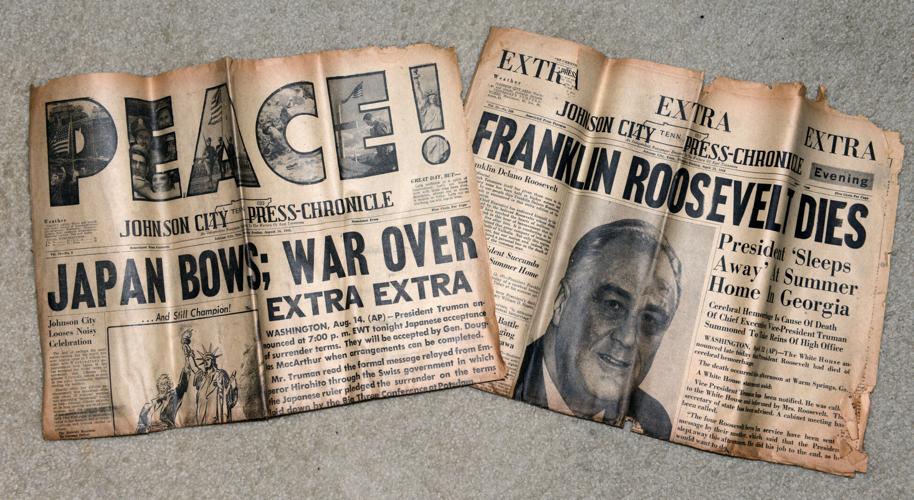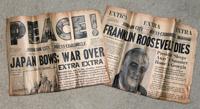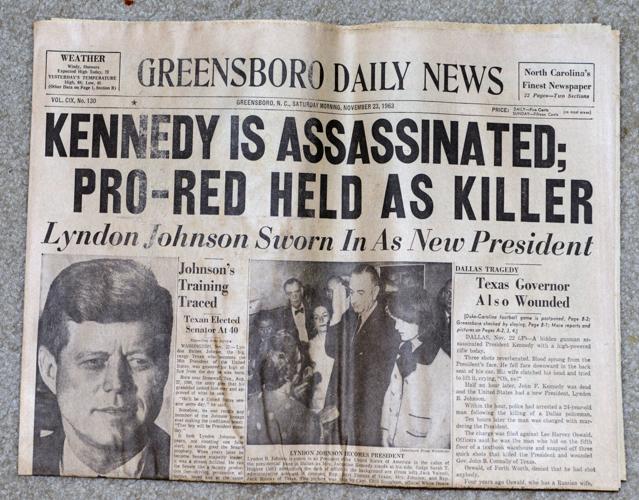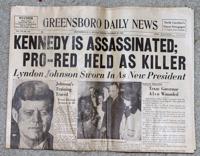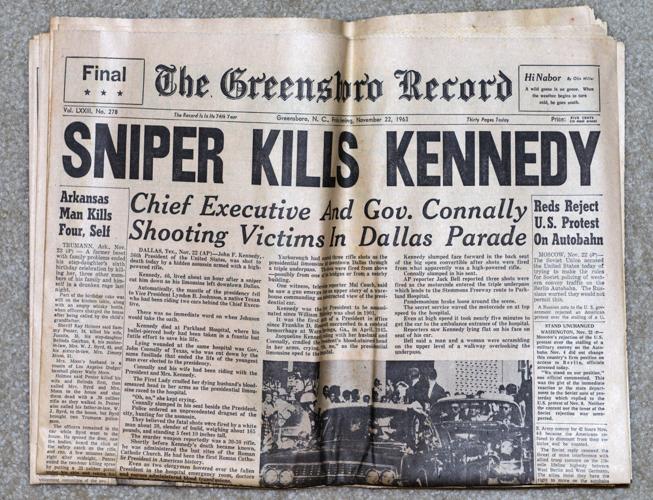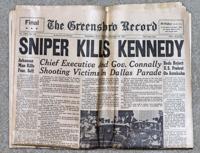There are people that like to collect newspapers. As historic memorabilia, there is a brisk market for editions from historic days.
I did a quick search for the collectable newspaper market and found editions of the Apollo 11 moon landing selling from $20 to $125. The New York Times edition of the Kennedy assassination was selling for $44, while the complete, bound editions of HarperŌĆÖs Weekly for the entire year of 1864 was selling for $1,500.
ItŌĆÖs not just collectors that keep newspapers. My grandmother kept clippings and pages about my dadŌĆÖs baseball career. Even I admit to keeping newspapers of some stories, photos and layouts I have done of local events.
HereŌĆÖs a bit of Times News trivia for you. I was working on the night of the Trump-Clinton presidential election. All night long it was too close to call. I was working on the Metro section and had sent my pages while Frank Cannon was doing the front section.
Frank and I were the only two left in the newsroom, and while he was finishing the front, I had a dozen different news services called up on the computer waiting to see if a winner would be declared. Frank, while hoping for a winner, put together a front page that said the election was too close to call.
We waited until the deadline had passed and then Frank sent the front page to be output and the plate for the press made. Just as the presses had slowly started to turn, an AP bulletin came across declaring Trump the winner. I yelled at Frank who then yelled at the pressroom and everything came to a stop. A new front page was made with Trump the winner and the presses rolled.
However, about 400 of the ŌĆ£too close to callŌĆØ editions made it to the loading dock, picked-up by the carriers and delivered. This means if you have one of those papers from election night you have a collectors item. It would be especially good as a collector if you have both the stopped ŌĆ£too close to callŌĆØ edition and the ŌĆ£Trump winsŌĆØ edition. (I do.)
While collecting newspapers from historic events can be interesting and profitable, a professor from one of my history tours said he found it more interesting to look at the newspapers from the day before a historic happening to see what things were like prior to the event and how that event may have changed things.
With June 6 being the anniversary of D-Day, I thought I would take the professorŌĆÖs advice and look at the papers from June 5 and see what was going on the day before.
Of course, World War II dominated the front pages as the headlines read ŌĆ£Allies Liberate RomeŌĆØ and ŌĆ£Troops from Anzio drive through fierce battles in suburbs to take city.ŌĆØ There were also stories with headlines ŌĆ£DeGaulle expected in Britain for parley with ChurchillŌĆØ and ŌĆ£U.S. subs do four times damage of ŌĆś42.ŌĆØ
There was no local news on the front page.
The baseball season was in full swing. The national pastime gave folks a break from the tragedy of war. The big thing in the sports pages was the Appalachian LeagueŌĆÖs ║┌┴Ž╩ėŲĄ Cardinals breaking the nine-game winning streak of the Kingsport Cherokees in a game played at Kingsport.
KingsportŌĆÖs catcher dropped a third strike allowing a Cardinal score, and another ║┌┴Ž╩ėŲĄ player hit a home run over the bushes in right field to give the visitors a 5-3 victory.
Kingsport returned the favor by beating ║┌┴Ž╩ėŲĄ the next day, June 5, 8-1. It was the CherokeeŌĆÖs 16th win in 20 starts, but the Cardinals still held a one game lead in the Appy league standings.
In local news, WAVE recruiters were urging women to volunteer for the war effort and would be at the U.S. Navy Recruiting Station in the Kingsport Post Office Building until Wednesday night.
In a story out of Virginia in the ║┌┴Ž╩ėŲĄ, a 15-year-old girl lost her life Saturday when she dived into the Bannister River in an attempt to rescue her 3-year-old brother who had gone under. Her father rescued the brother but didnŌĆÖt rescue the sister in time.
Below the drowning story was a story from Washington D.C. and the Office of War Information saying the civilian soap requires most of inedible tallow and ŌĆ£housewives are asked to turn in 250,000,000 pounds of fats.ŌĆØ The story noted that last yearŌĆÖs collections were under 100,000,000 pounds.
In ║┌┴Ž╩ėŲĄ, Washington County Bus Lines announced that it would have 10 new buses soon. ŌĆ£We all realize the necessity of using the many materials needed in their construction for a greater need at this time,ŌĆØ the bus line said. ŌĆ£It is up to each of us to use what we now have until we can get delivery of our new buses.ŌĆØ
Washington County Bus Lines had routes running between ║┌┴Ž╩ėŲĄ and Kingsport, ║┌┴Ž╩ėŲĄ and Holston Ordinance, ║┌┴Ž╩ėŲĄ and Limestone, ║┌┴Ž╩ėŲĄ and Colonial Heights and ║┌┴Ž╩ėŲĄ and the Holston Institute.
Buried on page 16 of the Times News was the story headlined ŌĆ£Rev. Greer Emphasizes World Problems to D-B Graduates.ŌĆØ The story led with a quote from Rev. Greer, ŌĆ£Yesterday is dead, today is dying and tomorrow is being born.ŌĆØ
It was the start to his baccalaureate sermon to the graduating class of Dobyns-Bennett at the Civic Auditorium Sunday night, which reporter Florine Cooter said ŌĆ£impressed upon the group of young people the inevitable shifting of world problems upon their shoulders. Denying any feeling of sorrow toward the young people before him at the condition in which they were finding their world, he expressed his firm belief that the state of affairs was far from hopeless.ŌĆØ
Little did Rev. Greer know how right he was that affairs were far from hopeless. When this story was published just a few days later, ships full of soldiers were sailing for the beaches of Normandy, France, and airborne troops were boarding their planes in preparation to jump behind enemy lines, turning the tide of the war.
Ned Jilton II is a photographer, history lover and columnist. You can contact him at ndjphoto@aol.com.
